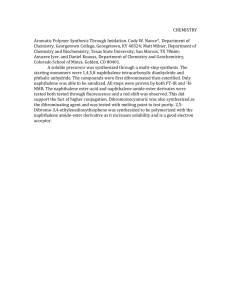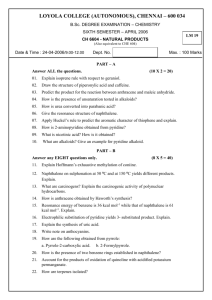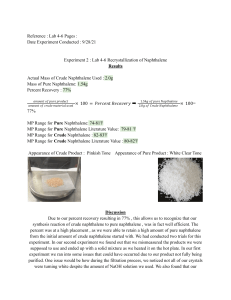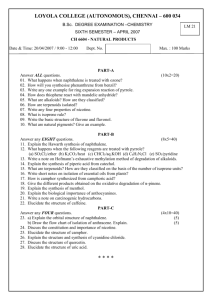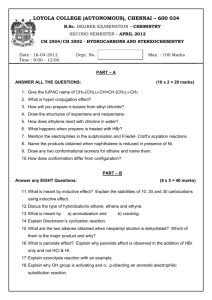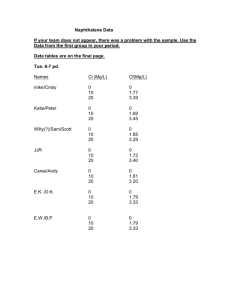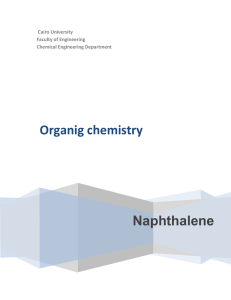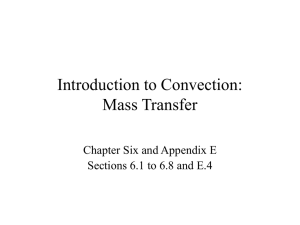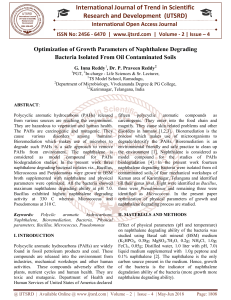malPharos University جامعه فاروس Faculty of Engineering كلية الهندسة
advertisement
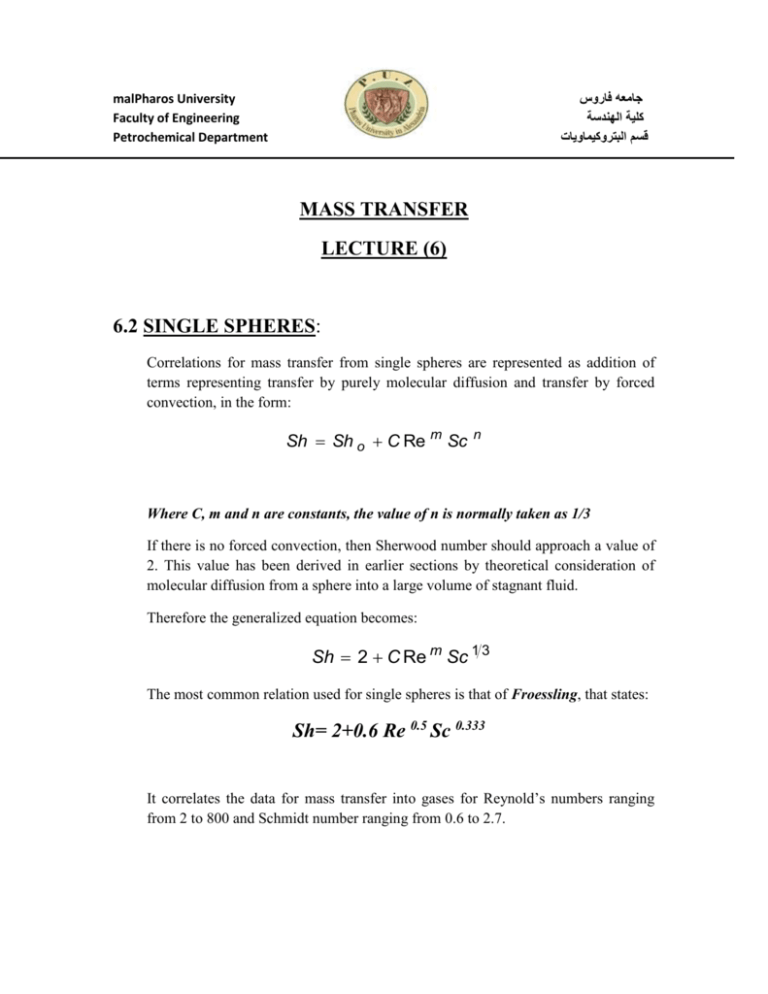
جامعه فاروس
كلية الهندسة
قسم البتروكيماويات
malPharos University
Faculty of Engineering
Petrochemical Department
MASS TRANSFER
LECTURE (6)
6.2 SINGLE SPHERES:
Correlations for mass transfer from single spheres are represented as addition of
terms representing transfer by purely molecular diffusion and transfer by forced
convection, in the form:
Sh Sh o C Re m Sc
n
Where C, m and n are constants, the value of n is normally taken as 1/3
If there is no forced convection, then Sherwood number should approach a value of
2. This value has been derived in earlier sections by theoretical consideration of
molecular diffusion from a sphere into a large volume of stagnant fluid.
Therefore the generalized equation becomes:
Sh 2 C Re m Sc 1 3
The most common relation used for single spheres is that of Froessling, that states:
Sh= 2+0.6 Re 0.5 Sc 0.333
It correlates the data for mass transfer into gases for Reynold’s numbers ranging
from 2 to 800 and Schmidt number ranging from 0.6 to 2.7.
EXAMPLE (1):
The mass flux from a 5 cm diameter naphthalene ball placed in stagnant air at 40C and
atmospheric pressure, is 1.47 * 10 –3 mol/m 2. sec. Assume the vapor pressure of
naphthalene to be 0.15 atm at 40C and negligible bulk concentration of naphthalene in
air. If air starts blowing across the surface of naphthalene ball at 3 m/s by what factor
will the mass transfer rate increase, all other conditions remaining the same?
For spheres:
Sh = 2.0 + 0.6 (Re) 0.5 (Sc) 0.33
Where Sh is the Sherwood number and Sc is the Schmids number. The viscosity and
density of air are 1.8 * 10 –5 kg/m.s and 1.123 kg/m 3, respectively and the gas constant is
82.06 cm 3. atm/mol.K.
SOLUTION:
NA=
kc =
*(PAs-PA∞)
*82.06*(273+40) = 0.0252 cm/s
kc =2.517*10-4 m/s
Case I (Stagnant air):
ShD = 2
(Kc *D/DAB) = 2
(2.517*10-4 *5*10-2/DAB) = 2
DAB = 6.2925*10-6 m2/s
Case II (Stagnant air):
Sh = 2.0 + 0.6 (Re) 0.5 (Sc) 0.33
= 2+ 0.6
0.5
0.33
kc = 0.0102 m/s
= 40.5
6.3 SINGLE CYLINDER:
Several investigators have studied the rate of sublimation from a solid cylinder into
air flowing normal to its axis. Bedingfield and Drew correlated the available data in
the form:
kG P Sc0.56
0.4
0.281Re D
GM
Which is valid for 400 < Re D < 25000
And
0.6 < Sc < 2.6
Where ReD is the Reynold’s number in terms of the diameter of the cylinder, G m is
the molar mass velocity of gas and is evaluated by (
EXAMPLE (2):
, and P is the pressure.
SOLUTION:
Sc =
GM =
=
=
= 0.187
6.4 FLOW THROUGH PIPES:
Linton and Sherwood modified the above relation making it suitable for large ranges
of Schmidt number. Their relation is given as:
Sh 0.023 Re 0.83 Sc 1 3
And found to be valid for:
2000 < Re < 70000
1000 < Sc < 2260
Note: Re and Sc are evaluated at the bulk conditions {(Tin +Tout )/2} of the liquid
inside the pipe.
For Laminar flow of a fluid through a tube, with a Reynolds number range of 10<Re
<2000, the appropriate mass transfer correlation is:
Sh = 1.86 (
Re Sc) 1/3
Where:
L: The Length of the pipe.
